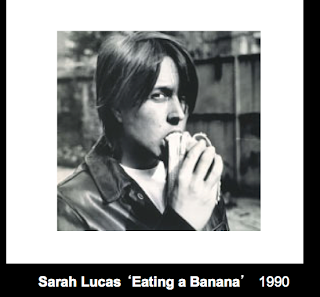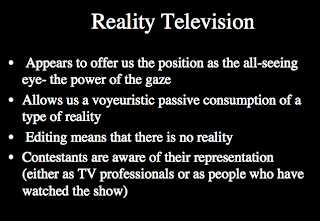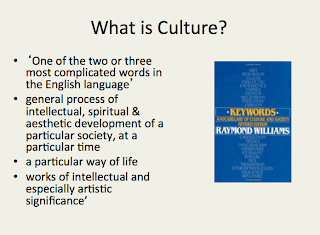John Berger quote - commonly misunderstood - women are not vain - they are trying to be looked at less
Hans Memling - age of witch hunting
Artworks using objects and gestures to allow us as an audience to look at them
The mirror. The arm across the face.
This advert wasn't approved as above because of its extreme content of nudity and objectification of the female. Whereas the version below was passed because of its change in orientation the audience it drawn to her face more so than the rest of her body softening the fact that she is completely naked.
Staring at you - signs of a wealthy woman with the servants/nanny in the background
Modern nude - Berger compares this with Titans nude.
Prostitute - but looks wealthy - symbol of modernist women.
Ingres & Guerrilla Girls - survey of the art world.
Self portrait (top right)
Many perspectives - not realistic
Partially naked lady - people in the background act as if its normal.
Sunglasses reduce challenge of being seen by the 'seen' lessening the audience being watched.
Looking down at herself so we are not being watched, context of the billboard - she's looking down on us, flirting from a high up position.
Perversion leading to the death of a woman
Men are also objectified - can the be objectified whilst women are? - it exists but to what frequency?
D&G advert - youth, strength, power, 5 males returning the gaze - representation of the 20th/21st century cult of strength and healthy male.
The camera chops the body up and presents it to the audience as an object of consumption.
Infantile scopophilia - pleasure in looking - cinema experience - the protagonist is male the female is the adonis - imbalance
Lecturer at Leeds University
Some artists have been read as illustrative of the gaze.
Text and imagery offer and alternative - reference of violence in the text 'hits the side of my face' implying that the gaze causes harm, could be interpreted as the gaze upon a female in this fashion has a harmful and reductive effect on society and the way we look at each other, especially that of the opposite sex.
The woman carrying around the idea of being looked at
Banana - fallik object - uncomfortable to be seen eating in public or so openly.
Women making money with their bodies.
Knox/Sollecito case - witches - hammer of witches - women are demonic if they are accused
Circumstances portrayed the case verdict incorrectly - guilty instead of innocent
They had two stories prepared - by publishing the standby story the Daily Mail exposes itself.
Reality T.V. - we never approach something as a reality.
Big Brother - set up so people sunbath and use the pool - people showing more nudity to keep people interested - diary room shows the contestants crotches on the camera so you have this view of every personal aspect of them. The idea of the diary room gives a one on one idea between the audience and the contestant, however the audience is fully aware of the contestants ignorance to who is looking at them, they feel as though they are being allowed to see every private aspect of the conversation and their physical being.
Simulacrum - endless hall of mirrors




































































